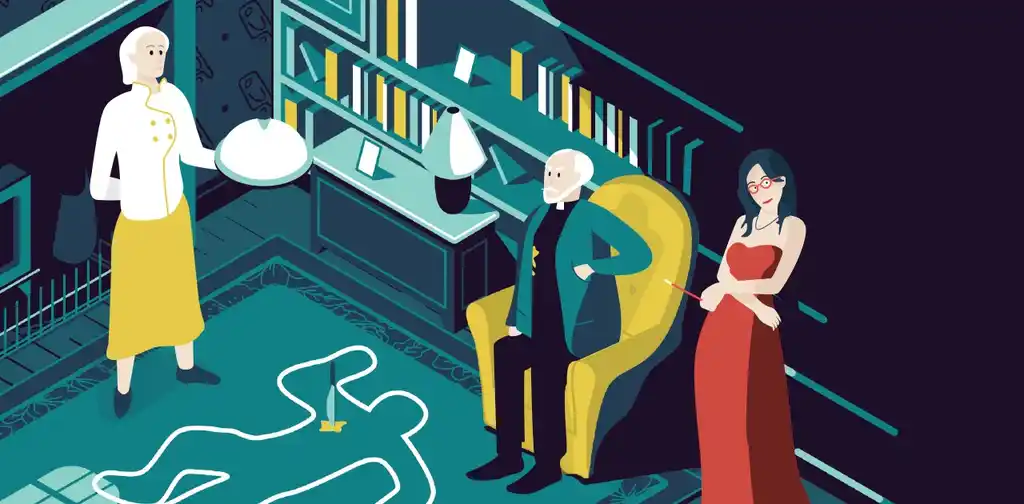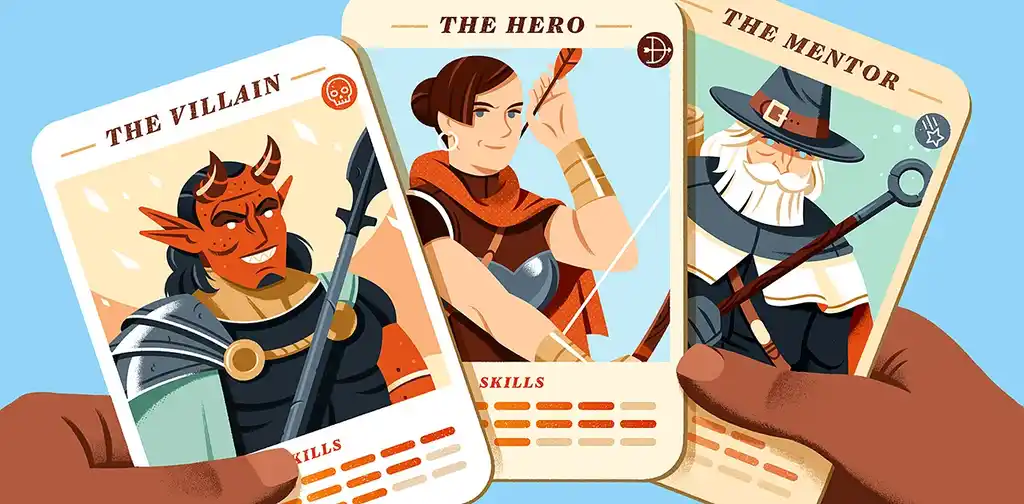Guides • Perfecting your Craft
Last updated on Oct 28, 2024
The Ultimate Guide to Third Person Point of View (+ Examples)
About the author
Reedsy's editorial team is a diverse group of industry experts devoted to helping authors write and publish beautiful books.
More about the Reedsy Editorial Team →Dario Villirilli
Editor-in-Chief of the Reedsy blog, Dario is a graduate of Mälardalen University. As a freelance writer, he has written for many esteemed outlets aimed at writers. A traveler at heart, he can be found roaming the world and working from his laptop.
View profile →Third person POV uses a distinct narrator who is not a character in the story. This narrator is privy to the thoughts and feelings of characters and can relate as much — or as little! — information to the reader as the author desires.
As perhaps the most enduring point of view in literature, it offers a unique set of advantages to authors who use it, along with challenges. Here, we’ll simply cover everything you need to know about third person as a whole, and why writers might choose to use it over first or second person perspectives.

FREE COURSE
Understanding Point of View
Learn to master different POVs and choose the best for your story.
What is third person point of view?
Third person point of view is a narrative style in which the narrator refers to all characters using the pronouns he, she, or they. An example of a sentence written in third person would be:
She waited for her food to arrive. “What's taking so long?” she thought.
Alongside first person POV, it’s one of the most popular and flexible viewpoints you’ll find in literature, in part because there are three types of ways in which authors can use it.
The three types of third person point of view
Third person POV is usually broken down into three categories:
- Third person limited. Third person limited tells a story using one character’s perspective at a time. Therefore, the reader is “limited” to that character’s mind. Read our full guide on it here.
- Third person omniscient. A third-person omniscient narrator is an all-knowing figure that can narrate a story through the thoughts, emotions, and experiences of multiple characters. Read our full guide on it here.
- Third person objective. This POV presents an unbiased, neutral narrator that simply describes events and isn’t privy to a character’s feelings.
Third-person is the point of view that gives authors the power of a movie camera: you can pan over to any character or situation, adjust for any angle, and zoom in and out of the scene depending on what you need. Speaking of which…
What are the advantages of third person POV?
Third person is no one-trick pony, and it’s common not just for its versatility. It offers many benefits to authors using it.
Let’s dissect it.
Third person stories often have a wider scope
First and second person stories can be restrictive if you want readers to see the bigger picture. Of course, one could argue that it’s possible to write a sprawling novel written from multiple first-person perspectives. But having an enormous cast all narrating in first person can be confusing, and would put a lot of pressure on the writer to sustain multiple convincing character voices.
That’s when third person comes to the rescue. Complex stories with a large primary cast often benefit from a narrator who can swiftly move between characters and locations, instead of being tethered to your viewpoint character.
Psst! For more help with characterization when dealing with a large chorus of characters, you can check out our free character profile resource below.

FREE RESOURCE
Reedsy’s Character Profile Template
A story is only as strong as its characters. Fill this out to develop yours.
It’s great for intrigue and suspense
One challenge of writing in first person is knowing how to toe the line between what your narrator knows and what they should reveal. Third person adds a little more distance, making it easier to flesh out main characters or move the story along without divulging information you wish to reveal later on.
This lends itself particularly well to thriller and mystery novels, where some holding back certain bits of exposition is essential to heightening the suspense. It can also be useful when writing any kind of novel that wants to deploy backstory or character history at a time when it can have maximum impact.
On the other hand, the third person isn’t just great for characters keeping secrets from the reader. An all-knowing narrator can also be useful for creating dramatic irony, revealing details that the characters don’t know themselves.


GET ACCOUNTABILITY
Meet writing coaches on Reedsy
Industry insiders can help you hone your craft, finish your draft, and get published.
Third person point of view can help you build up your world
A third person point of view can be a great choice when your story requires a certain amount of descriptive worldbuilding. Whilst first and second person narrators certainly talk about their environment, third person narratives can offer a more natural way to include worldbuilding exposition, especially when extended passages of description might be required.
A first person narrator probably might not take the time to intricately describe something they’ve seen a thousand times. If you live in a world where society is ruled by a giant brain from outer space, you probably wouldn’t pause your story to arbitrarily explain the backstory of ‘President Lobularr the Cruel.' But a third person narrator will have no limits to what they might want to zero in on at any point in the story.
Third person POV is a viewpoint that doesn’t distract from the narrative
In its enduring popularity, third person narratives have become the default mode of storytelling around the world, pre-dating even thelikes of Homer (the epic poet, not the animated nuclear engineer). As a result of its long and impressive history, this viewpoint has the benefit of instant familiarity.
Starting a story in third person helps readers settle in right away, rather than asking them to adjust to the particular voice of a first-person narrator or the unusual directness of second person. Ever found a story’s first chapter hard to settle into? This may be because of an unconventional narrative style or unanswered questions about who is doing the talking distracting you. Third person narratives are relatively easy to get into the swing of.
While many writers are keen to develop an utterly unique way of writing, most of the time, readers aren’t looking for something particularly experimental or opaque. In that way, the third person can be a writer’s best friend — a straightforward, versatile, and easily digestible narrative perspective that has stood the test of time.
Examples of third person point of view in action
Now that you know what third person point of view can offer, let’s see a few examples of it in literature. We use a mix of omniscient and limited in the below instances — see if you can identify which is which!
1. Song of Ice and Fire by George R.R. Martin
The morning had dawned clear and cold, with a crispness that hinted at the end of summer. They set forth at daybreak to see a man beheaded, twenty in all, and Bran rode among them, nervous with excitement. This was the first time he had been deemed old enough to go with his lord father and his brothers to see the king's justice fine. It was the ninth year of summer, and the seventh of Bran's life.
The man had been taken outside a small holdfast in the hills. Robb thought he was a wildling, his sword sworn to Mance Rayder, King-beyond-the-Wall. It made Bran's skill prickle to think of it.
Because of its sprawling cast, George R.R. Martin uses third person POV to great effect in his Song of Ice and Fire series. With each chapter break, Martin shifts to a new viewpoint character (while staying in third person), allowing him to span vast gaps in the geography of his world and give insight into each character’s personality.
In this particular scene, Martin’s third person narrator has the flexibility to play this scene through the eyes of a nervously excited seven-year-old while also revealing useful expositional details like the idea of a “King-beyond-the-Wall” and Westeros’s decade-long gaps between winters.
2. The Vanishing Half by Brit Bennett
The morning Early Jones arrived, the sky hung heavy and hot with rain. From the edge of the couch, Desiree listened to the spring storm as she braided Jude’s hair, remembering those first weeks in new Orleans, duckin with Stella under eaves when the showers caught them unaware. She eventually grew used to the capricious rain, but back then she’d shrieked at every sudden storm, laughing with Stella as they pressed against the side of a building, water splattering against their ankles.
In this passage from The Vanishing Half, author Brit Bennett describes a humid Louisiana rainstorm from the perspective of her protagonist, Desiree.
Instead of telling the reader that “it was a hot, rainy day,” this passage employs several “showing” devices, including strong verbs and sensory descriptions (“the sky hung heavy and hot,” “water splattering against their ankles”). Bennett evokes one of Desiree’s memories packed with specificity — the girls duck under “eaves” rather than just roofs, and the word “shrieked” conjures a very particular sound. The result practically drops the reader next to Desiree as she braids her daughter’s hair, half-lost in a ripple of nostalgia.
Written in third person, this passage is just as intimate and personal as it would have been were being narrated directly by Desiree, once again showing the versatility of this viewpoint.
3. 1984 by George Orwell
In its second minute the Hate rose to a frenzy. People were leaping up and down in their places and shouting at the tops of their voices in an effort to drown the maddening bleating voice that came from the screen. The little sandy-haired woman had turned bright pink, and her mouth was opening and shutting like that of a landed fish. Even O’Brien’s heavy face was flushed. He was sitting very straight in his chair, his powerful chest swelling and quivering as though he were standing up to the assault of a wave.
Like we mentioned earlier, writers who use third person point of view can control “camera angles,” so to speak. Unlike first person and second person, you’re not obligated to remain inside one character’s head. George Orwell takes full advantage of this: he zooms out to give us a snapshot of the entire setting, before zooming back in to focus in on O’Brien in this scene from 1984.
4. Romeo and Juliet by Shakespeare
Come, bitter conduct, come, unsavoury guide!
Thou desperate pilot, now at once run on
The dashing rocks thy sea-sick weary bark!
Here’s to my love. O true apothecary,
Thy drugs are quick. Thus with a kiss I die.
This scene from Shakespeare’s Romeo and Juliet is an effective instance of the dramatic irony that third person POV can offer. Romeo’s just discovered Juliet’s body. Unwilling to live in a world without the girl he has loved (for all of five days), he downs a vial of poison.
At this point, the audience knows that Juliet is not dead — but merely sedated in a ploy to escape her family. The gulf between what the audience or reader knows and what the character knows creates an almost unbearable tension, bringing the story to its climax as Juliet awakens to discover her beloved’s corpse beside her.
When should you use third person point of view?
That brings us to the ultimate question: should you use third person point of view in your own writing?
As always, it depends on your book, and the story that you’re trying to tell. Before committing to third person POV, we recommend asking yourself these questions:
- How ‘close’ to you want to be to your characters? The flip side of third person POV’s flexibility is that it, by nature, keep the characters at an arm’s length. This means it’s not quite as intimate as first person, and you’ll sacrifice some immediacy for freedom.
- How will you reveal plot turns and secrets? In third person limited, the narrator sees and knows everything the main character does, and can reveal things about the protagonist that would not otherwise come out in the first person. Third person omniscient narrators are all-knowing and all-seeing — but they can choose not to reveal details.
- Which genre do you write in? Third person is so versatile that you’ll find it in almost all genres — but some genres may be even better suited for it than others. It’s a prevailing trend, for instance, in mysteries, thrillers, and epic fantasies.
If you’ve decided that you want to try it out, your next question may be which type of third person point of view is right for you. Head on to the next two posts in this series and take our quiz below for the answer.
🖊️
Which POV is right for your book?
Take our quiz to find out! Takes only 1 minute.
In the following posts, you’ll learn even more about which type of third person would best suit your own project, and get tips on how to write in third person to help you create a story that will be enjoyed by many more than three people, as it were.


